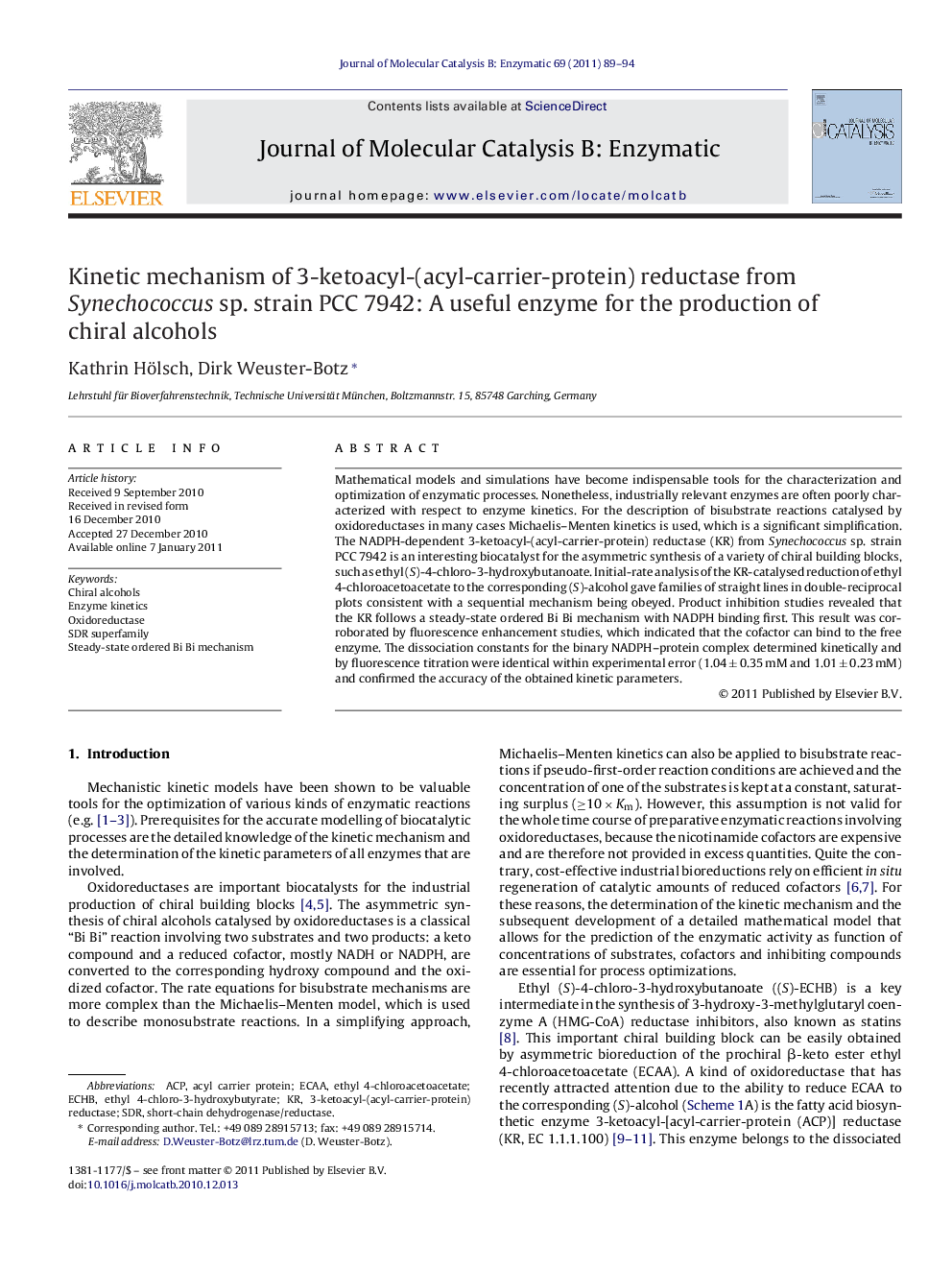| Article ID | Journal | Published Year | Pages | File Type |
|---|---|---|---|---|
| 70317 | Journal of Molecular Catalysis B: Enzymatic | 2011 | 6 Pages |
Mathematical models and simulations have become indispensable tools for the characterization and optimization of enzymatic processes. Nonetheless, industrially relevant enzymes are often poorly characterized with respect to enzyme kinetics. For the description of bisubstrate reactions catalysed by oxidoreductases in many cases Michaelis–Menten kinetics is used, which is a significant simplification. The NADPH-dependent 3-ketoacyl-(acyl-carrier-protein) reductase (KR) from Synechococcus sp. strain PCC 7942 is an interesting biocatalyst for the asymmetric synthesis of a variety of chiral building blocks, such as ethyl (S)-4-chloro-3-hydroxybutanoate. Initial-rate analysis of the KR-catalysed reduction of ethyl 4-chloroacetoacetate to the corresponding (S)-alcohol gave families of straight lines in double-reciprocal plots consistent with a sequential mechanism being obeyed. Product inhibition studies revealed that the KR follows a steady-state ordered Bi Bi mechanism with NADPH binding first. This result was corroborated by fluorescence enhancement studies, which indicated that the cofactor can bind to the free enzyme. The dissociation constants for the binary NADPH–protein complex determined kinetically and by fluorescence titration were identical within experimental error (1.04 ± 0.35 mM and 1.01 ± 0.23 mM) and confirmed the accuracy of the obtained kinetic parameters.
Graphical abstractFigure optionsDownload full-size imageDownload as PowerPoint slideResearch highlights▶ Initial reaction rate patterns indicated a sequential kinetic mechanism. ▶ Product inhibition patterns were consistent with an ordered Bi Bi mechanism. ▶ Fluorescence titration verified the accuracy of the kinetic parameters obtained.
